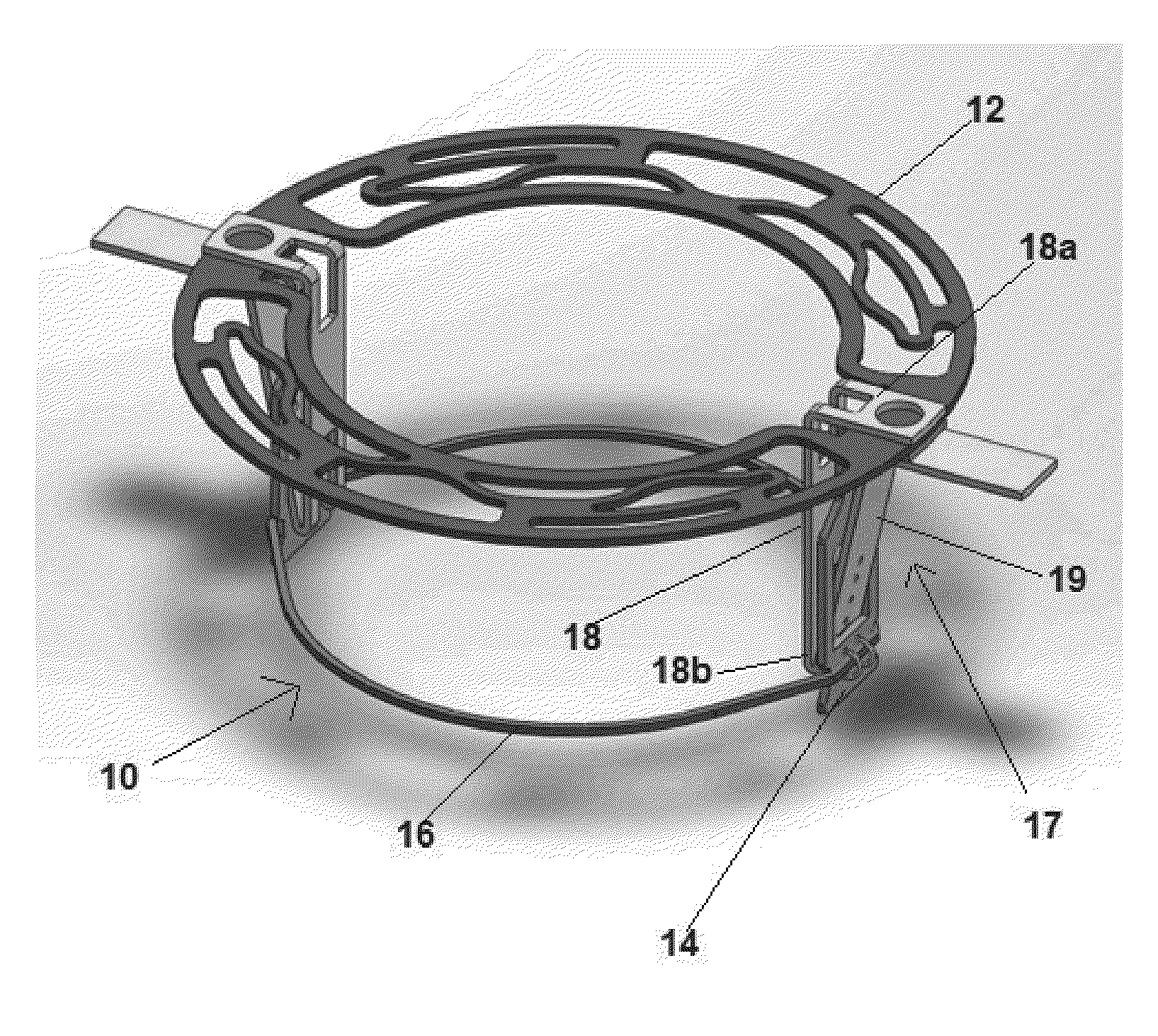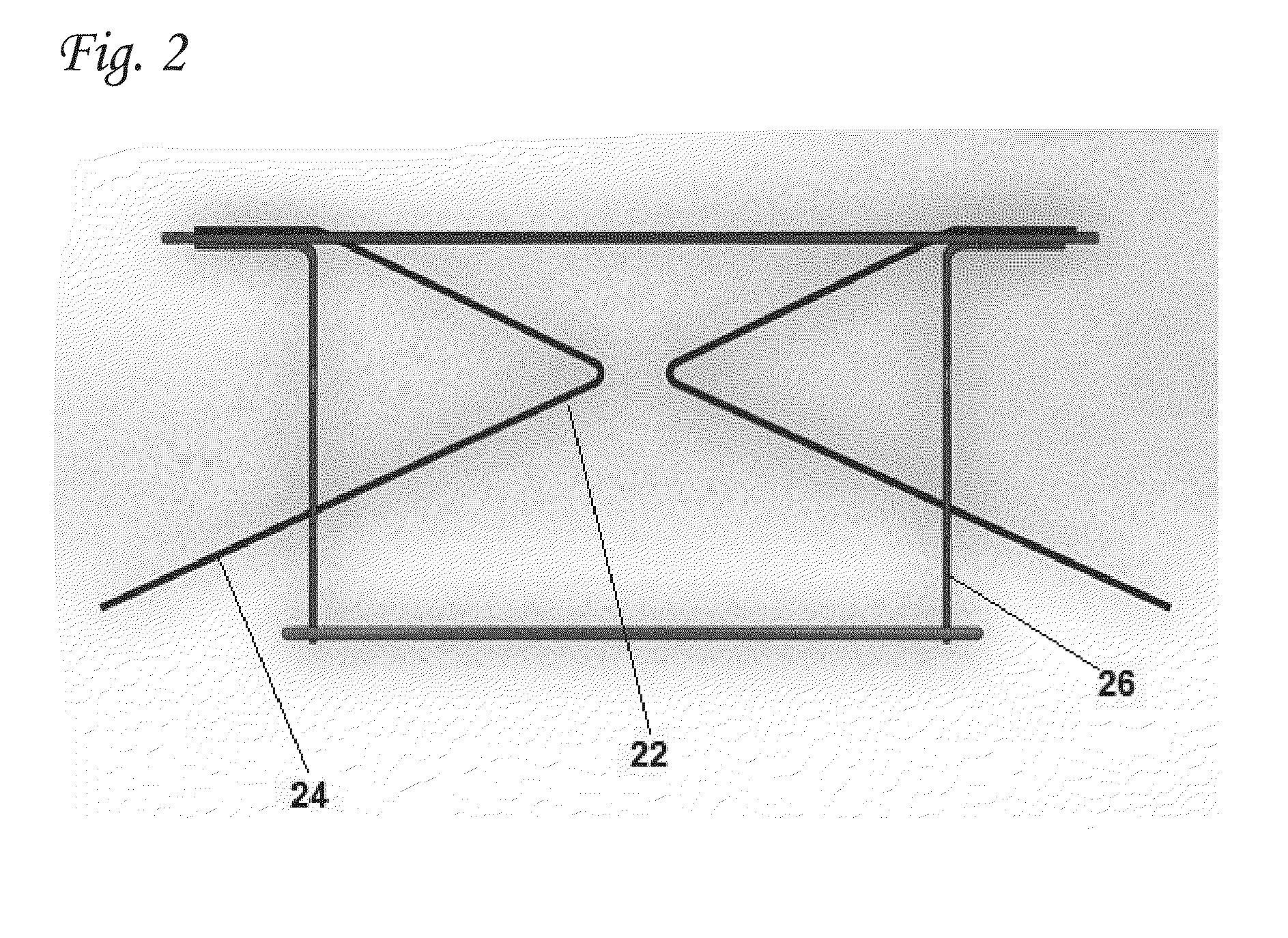Anchoring elements for intracardiac devices
a technology of anchoring elements and intracardiac devices, which is applied in the field of stabilizing and anchoring elements for improving the stability of intracardiac devices, can solve the problems of increasing the difficulty of properly anchoring a replacement mitral valve in place, affecting and preventing blood leakage, etc., to achieve the effect of preventing paravalvular leakage, preventing leakage of blood, and contributing to the stability of the devi
- Summary
- Abstract
- Description
- Claims
- Application Information
AI Technical Summary
Benefits of technology
Problems solved by technology
Method used
Image
Examples
Embodiment Construction
[0083]As explained hereinabove, the present invention is primarily directed to means and elements for improving the stability of intracardiac devices. In one set of preferred embodiments, said devices are cardiac valve support devices for use in two-step valve replacement procedures, preferably in the mitral position. In other preferred embodiments, the intracardiac device may be a valve support device that is intended for implantation at other positions within the heart. Furthermore, the stabilizing and anchoring elements of the present invention may also be used to increase the stability of other types of intracardiac device, such as annuloplasty rings and one-piece prosthetic valves. Thus, although the detailed description that follows relates mainly (but not exclusively) to valve support devices for use in the mitral position, the present invention also includes within its scope the presently-disclosed and claimed stabilizing and anchoring elements when incorporated in any of th...
PUM
 Login to View More
Login to View More Abstract
Description
Claims
Application Information
 Login to View More
Login to View More - R&D
- Intellectual Property
- Life Sciences
- Materials
- Tech Scout
- Unparalleled Data Quality
- Higher Quality Content
- 60% Fewer Hallucinations
Browse by: Latest US Patents, China's latest patents, Technical Efficacy Thesaurus, Application Domain, Technology Topic, Popular Technical Reports.
© 2025 PatSnap. All rights reserved.Legal|Privacy policy|Modern Slavery Act Transparency Statement|Sitemap|About US| Contact US: help@patsnap.com



